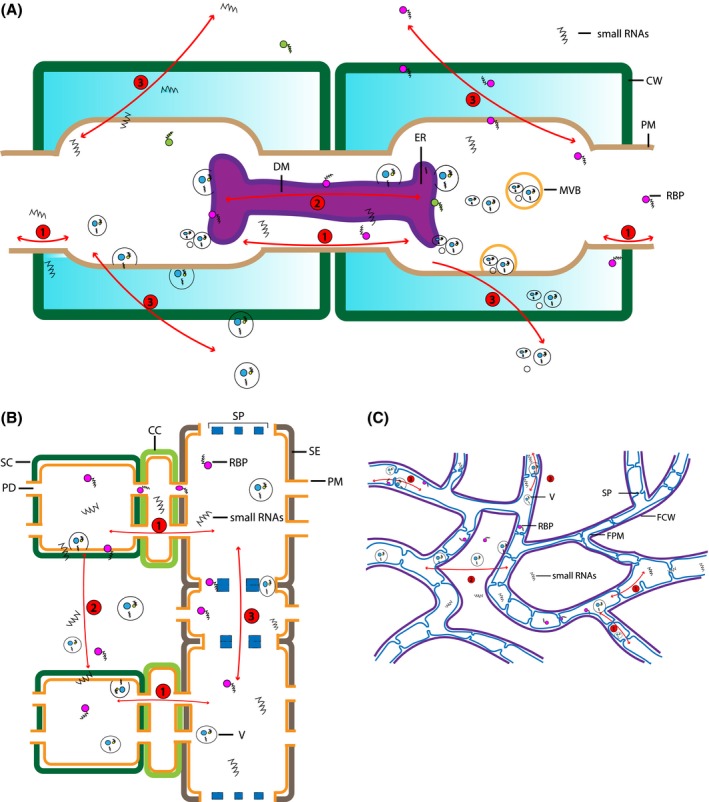Figure 1.

Short‐ and long‐distance transportation of small RNAs in plants and fungi. (a) Cell‐to‐cell movement in plants: 1, naked small RNAs, small RNAs bound to RNA‐binding proteins (RBP), and small RNAs enclosed in vesicles can move from cell to cell through spaces between the plant plasma membrane (PM) and desmotubule (DM); 2, small RNAs can be transported through the DM, which connects the endoplasmic reticulum (ER) of two adjacent cells; 3, small RNAs can be secreted from the PM and travel through the plant cell wall (CW) to extracellular spaces, and small RNAs can also be taken up by other cells (multiple vesicle bodies, MVB). Note: Vesicle transport through plasmodesmata by active gating is hypothetical at this time. (b) Long‐distance movement in plants: 1, naked small RNAs, small RNAs bound to RBP, and small RNAs inside vesicles can be transported from source cells (SC) to companion cells (CC) and then to sieve tube elements (SE) through plasmodesmata; 2, small RNAs can be secreted out of PM and travel through the plant cell wall (CW) to extracellular spaces and subsequently be absorbed by other cells; 3, small RNAs can be transported to distal plant cells through the sieve tube elements (sieve tube plates, SP). (c) Movement in fungi: 1, naked small RNAs, small RNAs bound to RBP, and small RNAs inside vesicles can be transported short distances cell to cell through the septal pore (SP); 2, small RNAs can be secreted out of fungal plasma membrane (FPM) and travel through the fungal cell wall (FCW) to extracellular spaces. Later, small RNAs can be absorbed by distal fungal cells and in this way small RNAs can be dispersed systemically throughout the whole fungal colony; 3, small RNAs can be transferred through the FPM. Unlike nonselective transportation through septal pores, FPM can conduct selective transportation by binding, fusion, and secretion. Note: small RNA movement in fungi needs more evidence.
